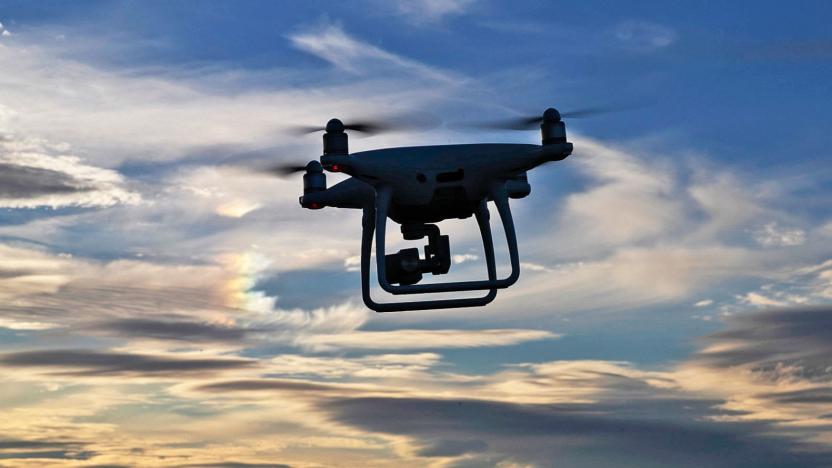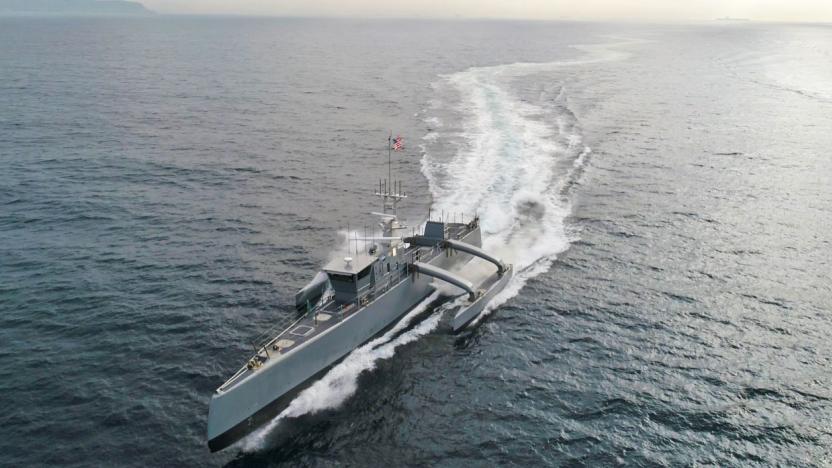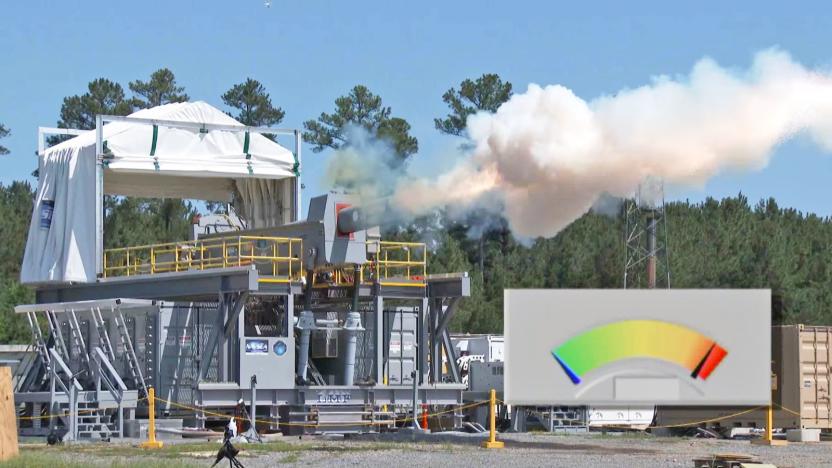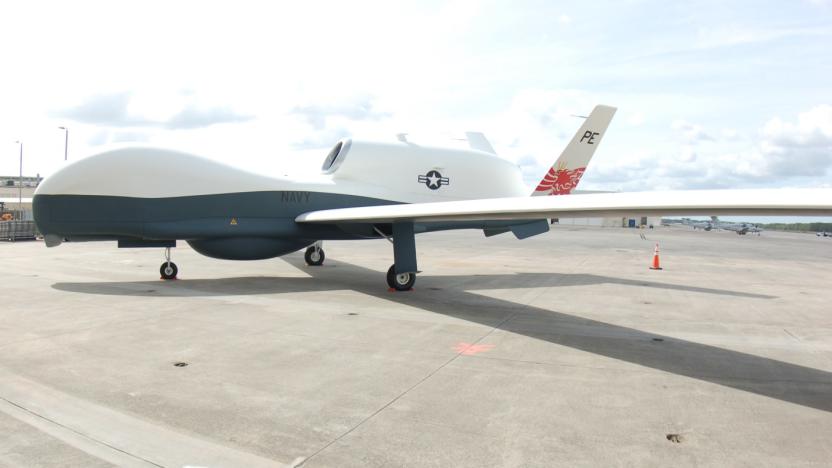Navy
Latest

Hitting the Books: Newfangled oceanographers helped win WWII using marine science
Lethal Tides tells the story of pioneering oceanic researcher Mary Sears and her leading role in creating one of the most important intelligence gathering operations of World War II.

Army pauses recruiting on Twitch after First Amendment criticism
The US Army has paused activity on its Twitch account after drawing criticism from First Amendment groups for banning a user who asked about war crimes during a livestream. The user, activist Jordan Uhl, subsequently wrote an article for The Nation criticizing the Army, Navy and Air Force for using Twitch as a recruitment method. Wednesday, Rep. Alexandria Ocasio-Cortez told Vice she plans to file a measure that would prevent the military from using Twitch and similar platforms for recruiting.

TSA bans employees from making TikTok videos
The Transport Security Administration (TSA) is the latest US government organization to ban the use of TikTok. The decision comes after New York Senator Chuck Schumer sent a letter to TSA administrator David Pekoske, in which he flagged a number of security concerns about China-owned app.

Navy bans TikTok from government-issued phones
Don't expect to post often on TikTok if you're serving in the US Navy. The military branch has banned use of the social video app on any government-issued mobile devices. ByteDance's software is allegedly a "cybersecurity threat," according to a bulletin. The Navy's Lieutenant Colonel Uriah Orland didn't offer specific reasons for the ban, but the notice asked troops to take action to "safeguard their personal information."

US Navy will scrap touchscreen controls on its destroyers
The US military normally embraces technology whenever possible. This time, however, it's taking a conspicuous step back. The Navy will ditch touchscreens on destroyers within the next 18 to 24 months, reverting instead to conventional helm controls and physical throttles. The decision came in response to feedback from the fleet after an investigation into the USS John S. McCain's collision in 2017, which killed 10 Navy sailors. The report found that the warship's complex touchscreen interface and poor training played a role in the crash with a Liberian-flagged vessel.

US took down Iranian drone using new jammer technology
When the USS Boxer took down an Iranian drone in the Strait of Hormuz, it apparently represented a baptism by fire for new technology. The Wall Street Journal understands that the action was the US Navy's first use of MADIS (Marine Air Defense Integrated System), an anti-drone system adapted for the sea. The technology uses jammers to block a drone's communications and force it to crash. Some versions of MADIS can also fire at the drones, although it's not clear that was the case here.

US Navy's next-gen helicopter drone is ready for service
It took a few years, but the US Navy's beefier Fire Scout helicopter drone is finally ready for action... more or less. The military branch has declared that Northrop Grumman's MQ-8C has reached "initial operational capability," or the minimum state it needs to enter service. The new, Bell 407-based variant is considerably larger than its 8B predecessor, but it's also more capable. The 8C can last roughly twice as long in the air at 12 hours on station, and carry roughly three times the payload -- 701lbs, to be exact. It also packs new radar with a larger field of view and more modes, including air-to-air targeting.

Android apps used by troops in combat contained vulnerabilities
Two Android apps used by the US military in live combat situations contained severe vulnerabilities that could have allowed attackers to gain access to troops' information, a Navy Inspector General report revealed. The mobile apps offered real-time messaging to coordinate with other military branches, displayed mission objectives and goals, showed satellite images of surroundings and highlighted locations of nearby enemy and friendly forces.

Chinese hackers reportedly hit Navy contractors with multiple attacks
Chinese hackers have been targeting US Navy contractors, and were reportedly successful on several occasions over the last 18 months. The infiltrators stole information including missile plans and ship maintenance data, according to a Wall Street Journal report that cites officials and security experts.

FAA warns drone operators to steer clear of high-priority naval bases
The military is authorized to shoot down drones flying over bases, but at least two naval bases are still struggling to get operators to stop getting too close. Now, the FAA has issued a stricter warning against flying drones too near Naval Base Kitsap (Washington) and Naval Submarine Base Kings Bay (Georgia) in order "to address concerns about potentially malicious drone operations over certain, high-priority maritime operations." More specifically, the FAA is restricting drone flights near the US Navy and US Coast Guard vessels operating in those bases. Kitsap is one of Navy's strategic nuclear weapons facilities, while Kings Bay houses the country's nuclear missile submarines.

Navy backs 'omniphobic' coatings to help ships travel farther
Researchers have already explored the idea of using water-repellent ship coatings that let ships travel faster and farther. The US Navy, however, is taking things a step further. It's backing University of Michigan work on an "omniphobic" coating that shrugs off virtually any liquid (it'll even fend off peanut butter) while lasting for a long time. Ships could theoretically glide through the water without nearly as much friction as ordinary vessels, consuming less fuel and traveling longer.

Synthetic 'blubber' could triple divers' survival time in icy water
Even the hardiest diver can't last longer than an hour in cold water using a modern wetsuit, and that's no good if you're a special ops soldier or otherwise need to stay under the sea for hours at a time. MIT has a simple solution: imitate the blubber that keeps seals and polar bears safe. They've developed an "artificial blubber" that promises to extend swim times in chilly water (under 50F) to as long as three hours. The approach combines a newly processed material with pockets that keep the cold out.

Chinese hackers stole undersea warfare data from US Navy contractor
Hackers associated with the Chinese government have broken into a US Navy contractor's systems and stolen data about undersea warfare. According to The Washington Post, these include secret plans to create a new anti-ship missile usable on US submarines by 2020.

DARPA turns drone ship development over to the Navy
DARPA has completed its part in the development of Sea Hunter, a submarine-hunting drone ship that can cross the open seas without a human crew for months at a time. It has officially handed over the ship's development to its project partner, the Office of Naval Research, which has already begun fine-tuning the drone's autonomous features. The Navy has also renamed the drone to Medium Displacement Unmanned Surface Vehicle (MDUSV)... which really isn't any better than its old name, Anti-Submarine Warfare Continuous Trail Unmanned Vessel or ACTUV. We've got a feeling people will stick to calling it Sea Hunter, unless the Navy can come up with a snappier nickname.

US Senate and Navy computers tied to revenge porn site
The Daily Beast reports today that a number of users of revenge porn site Anon-IB appear to be connecting from government computers. Einar Otto Stangvik, a security analyst with Norway's VG newspaper, was able to pull IP addresses from the website and they showed that a number of Anon-IB commenters and posters were logging on through IP addresses belonging to the US Navy, the US Senate, the Department of Energy and the Executive Office of the President.

British warships will soon have Siri-like voice controls
British warships will soon integrate Siri-like voice systems into their controls, according to the head of the UK's Royal Navy. Speaking at the Defence and Security Equipment International exhibition -- one the biggest arms fairs in the world -- First Sea Lord Admiral Sir Phillip Jones said the Royal Navy wanted to embrace the speed at which warfare is being transformed by IT, and pointed to new Type-31 frigates as an example.

The Navy’s railguns are ready for live-fire field tests
The US Navy has been testing its railguns, which fire shells at high velocity using electromagnets instead of explosive propellant, for years. Test footage emerged in 2012 showing off successful demonstration of the experimental weapon on land targets. But at long last, the military's new artillery piece is ready for live-fire testing in the field.

US Navy bans e-cigarettes on every ship in the fleet
Last year, the FDA finally started regulating e-cigarettes and swiftly ruled to keep them out of checked baggage on flights. Incidental reports that some had caught on fire led regulators to restrict them to carry-ons lest they ignite in midair. It seems the US Navy won't even take that chance, as the branch just banned e-cigarettes across the entire fleet.

Robots could soon cooperate on surveillance
Computers are getting better at spotting objects, but they tend to work in isolation. What good would a security robot be if it couldn't share info about an intruder with other machines? Cornell scientists might have an answer. They're designing a system that would let robots and other autonomous devices cooperate with each other on identifying and tracking objects. Each bot would send its imagery to a central unit that could talk to both other camera systems and the internet to help identify objects. The group would combine and compare images to follow objects and collect more information about them, getting more data than they would if they did all the work by themselves.

US Navy's MQ-4C Triton drone prepares for deployment in 2018
The last time we mentioned the Navy's long-range MQ-4C Triton drone was in 2013, and the project is still creeping towards eventual deployment. Northrop Grumman announced this week that it has completed formal lab testing, and also successfully flew for the first time with a software upgrade adding "Traffic Alert and Collision Avoidance System (TCAS), multi-aircraft control and additional Multi-Function Active Sensor (MFAS) radar modes."








